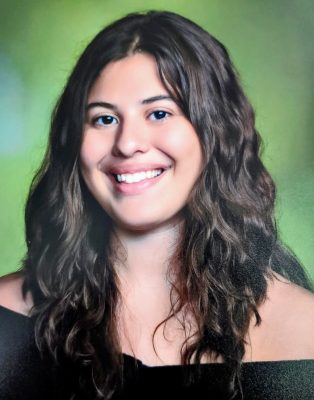AI at Fox Lane: A Recent Grad’s Reflection and Report on an Educational Divide
Opinion Advocates for ideas and draws conclusions based on the author/producer’s interpretation of facts and data.

By Elissa Leka
When I asked ChatGPT if allowing access and education on artificial intelligence is beneficial to students, its generative response was immediate.
“Yes,” it replied, “as long as it’s done thoughtfully and age-appropriately.”
It then went on to break down, level by level, what educators would have to do to ensure proper and ethical use, underlining the importance of using AI as a supportive tool, not a replacement for critical and creative thinking.
Still, its response neglected to cite input from educators or students, only amplifying the irony of the situation.
November 2022 welcomed the public release of ChatGPT, and with it, the birth of widespread apprehensions around its use. The tool was unlike anything publicly accessible before—it used large language models (LLMs) to generate humanlike responses, created images from text descriptions, and synthesized information from vast datasets as prompted by users.
I graduated from Fox Lane High School this past June, and I’ll soon be heading to Elon University to study journalism. For my final piece during my Examiner reporting internship, I wanted to explore a topic I’m passionate about: how educators can thoughtfully navigate the emergence of AI in classrooms.
Mixed Feelings at Fox Lane
In the Bedford Central School District, home to Fox Lane, the rise of generative AI has prompted a measured response. The district is taking an approach that prioritizes caution over speed in its integration of AI. A 2024 statement from the district emphasizes a commitment to at-length training in AI usage, and the importance of data privacy.
When reflecting on how long it has taken the board to create updated AI policies, Fox Lane High School Library Media Specialist Sonta Frindt stated that she appreciated the district’s slower pace. Frindt said it allowed for the BCSD committee to learn from other district’s struggles and triumphs, ask employees for their input, and evaluate how students were currently using their technology.
With Frindt’s guidance, I sent out a survey to teachers from varying departments in Fox Lane High School. The myriad responses I received revealed diverging views on AI.
Matthew Vanacoro, teacher and the district’s music coordinator, commented: “Teachers need to see multiple examples of what AI can do […] there are so many great tools being developed at an extremely rapid pace. It’s hard to keep up!”
Dr. William Tozzo, a math teacher at the high school, doesn’t share Vanacoro’s enthusiasm for AI. While he agreed it has beneficial uses for teachers, Tozzo struggled to reconcile the in-school use of AI with its significant ties to academic dishonesty. In an in-person interview with me, he expanded on his opinion. “There are ways to use AI,” he sighed, “and there’s ways not to use it.”
Despite school restrictions, students find ways to cheat using AI. Schools may block access to Photomath, a camera-operated math problem solver, but features like Google Lens remain available, allowing students to access similar problem-solving tools. While AI technology is not currently well-known for its math abilities, it has received significant attention for its generative writing products.
“I feel bad for humanities teachers, I really do,” Tozzo said.
David Albano, an English teacher at Fox Lane High School, voiced concerns on the depth of writing that AI creates. “For students, [AI] should have very limited use as it does not produce strong analytical writing, nor does it produce strong creative writing,” he wrote in response to my survey.
Albano has observed students using platforms like ChatGPT to entirely avoid writing assignments. Rather than saving time, AI usage has required Albano to take extra measures to ensure students are doing their own work in class. He’s resorted to assigning more in-class essays to evaluate students’ writing, as he cannot effectively assess student skills when unable to monitor their usage of AI tools outside of class.
Contrary to Albano, David Whalen, another English teacher at the high school, views AI as an opportunity that should be explored. He has even expressed his interest in using his writing intensive course as Fox Lane’s pilot class for SchoolAI, which is being considered for future use in BCSD.
“I look forward to the day when teachers are trained on how to use it,” Whalen remarked, “but we haven’t been yet.”
Students Speak Out
With teachers expressing varying degrees of trepidation and enthusiasm surrounding AI, I found it imperative to speak to those this conversation is centered around: the students.
Alex Montanno-Miller, a recently graduated senior and math enthusiast from Fox Lane, is confident that he “will never use AI in any context other than to help [him] with things that are not academic,” like finding a font, or testing its limited abilities with difficult math problems he has created with friends.
“It gets it wrong, and that’s entertaining for me,” he smiled. But this does not mean he thinks it shouldn’t be used at all.
“AI has all these negative connotations to it,” he said. “A lot of people just say, ‘oh, AI is bad,’ and there are also those other people that say, ‘hey it’s good!’ But in the context of education, AI can be used for good things if it’s not abused.”
Montanno-Miller gave two examples of AI abuse. If a student asks an AI processor to generate an essay for them, and then submits that essay, it’s an instance of unethical plagiarism. On the other side, if a teacher uses AI to create a lesson plan and releases it to students without examining the created material, that’s equally unethical.
“The teacher is the one with the expertise, not the AI,” he observed.
I spoke to Jacob Kaplan as well, a Fox Lane student with a passion for computer science. Despite his love for technology, Kaplan has a strong personal distaste for AI, and that distaste isn’t just centered around plagiarism.
He shared Montanno-Miller’s opinion that AI can be a good tool for students in moderation, but he worries about what happens when students become reliant on it.
“When you walk into the back of a class, you see at least two or three people around using AI,” he said. “Some of it’s ChatGPT, some is Google Gemini AI.”
Kaplan described AI as an addictive tool, comparable to how social media algorithms operate.
And, in the end, AI may be less like a cheat code or a bag of tricks, and more like a mirror — reflecting how students, teachers, and entire districts choose to engage with it.
Pearl River’s Head Start
Outside of Westchester, the Pearl River School District (PRSD) in Rockland County took an earlier and more proactive approach. Closely keeping up with the new tool, Dr. Marco Pochintesta, Pearl River’s superintendent, asked Director of Technology Jamie Haug to run a subcommittee of stakeholders dedicated to the research and development of AI systems in their schools.
In doing this, Pearl River beat New York State to the punch—only in this past year was legislation addressing AI in education introduced, with Assembly bill A7029 being an example. The bill, sponsored by Representative Michaelle C. Solages, calls for the Commissioner of Education to incorporate AI literacy instruction into curriculum for all K-12 students.
Though PRSD’s choice to implement AI into the district when it did might appear premature to some, Haug defended the timeline, and stated that after some months of research, she “realized that [AI] was pretty significant and what it could do could really change the landscape of teaching, especially on the secondary level.”
Early in the process, Haug met with SchoolAI, an AI platform designed to enhance K-12 teaching and learning experiences.
Together, they formed a partnership that ensured compliance with New York’s school privacy policies—policies that ChatGPT or Google Gemini would be unable to adhere to, as those chatbots can retain conversation data for training purposes.
In PRSD classrooms, SchoolAI aids English as a New Language (ENL) teachers in translations for their students and provides access to resources and tutoring outside teachers’ office hours. Students in the district have the tools to utilize SchoolAI on their own—every student is guaranteed a Chromebook under the district’s 1:1 policy, which ensures students have access to working technology at school and home.
“I love seeing the younger kids interacting with AI,” Haug gushed. “I think it’s just something that…can translate or level text, and really give them that experience that they’re feeling seen and personalized in the classroom from an AI bot.”
My Take
And what about me, a young writer?
I know I should undoubtedly agree with my English teacher, but I won’t lie and say I think AI should be so limited. Like Montanno-Miller, I use it for entertainment—prompting it with detailed plots and seeing what stories it comes up with. I like knowing that my creativity can’t yet be matched by a computer.
Like Haug has hoped for her own students, I use it to tutor me, and in conducting my own fact checks, I often end up learning more and enjoying the process. Sometimes, I even think I’m educating the AI.
Kaplan is not the only one who has witnessed the lack of critical thinking from the back of the classroom because of ChatGPT and Gemini. But it is more dangerous for students if we continue to ban artificial intelligence.
Students will always find a way to cheat—some put more effort into cheating than the actual work. By allowing controlled use and educating us from a young age with details like those I have compiled through my own research, we don’t give students more opportunities to cheat. We give them a tool that, yes, can compromise integrity, but that’s exactly why committees create policies and guidelines to discourage this behavior.
With thoughtful guidance, AI can become a powerful ally in education rather than a shortcut around learning.

Examiner Media – Keeping you informed with professionally-reported local news, features, and sports coverage.
